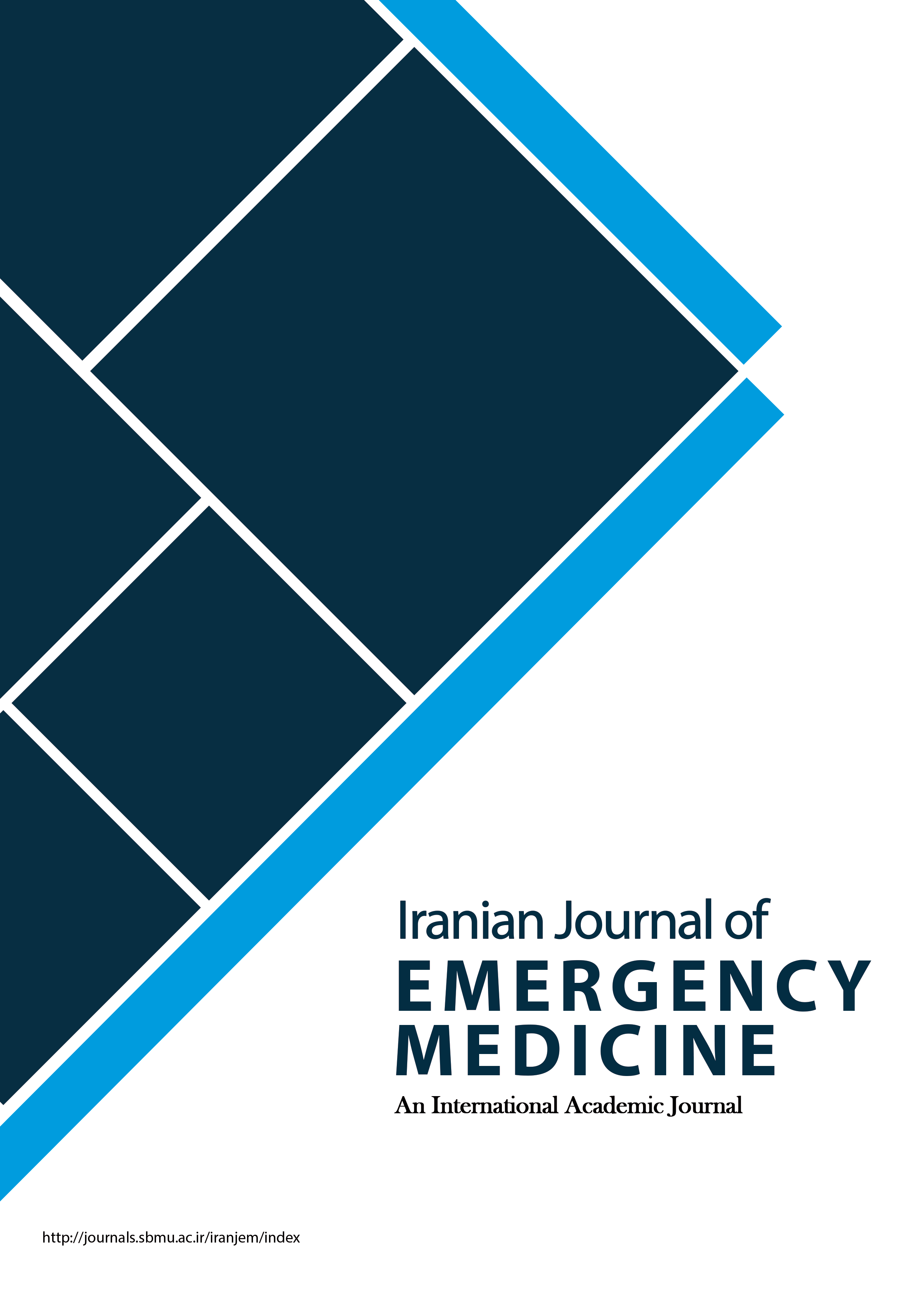Correlation of Ordered Cervical Spine X-rays in Emergency Department with NEXUS and Canadian C-Spine Rules; a Clinical Audit
Iranian Journal of Emergency Medicine,
Vol. 2 No. 4 (2015),
21 October 2015,
Page 150-154
https://doi.org/10.22037/ijem.v2i4.10120
Introduction: Evaluation of cervical spine injuries makes up a major part of trauma patient assessments. Based on the existing sources, more than 98% of the cervical spine X-rays show no positive findings. Therefore, the present clinical audit aimed to evaluate the correlation of ordered cervical spine X-rays in multiple trauma patients with NEXUS and Canadian c-spine clinical decision rules. Methods: The present clinical audit, evaluated the correlation of cervical spine imaging orders in multiple trauma patients presented to the emergency department, with NEXUS and Canadian c-spine rules. Initially, in a pilot study, the mentioned correlation was evaluated, and afterwards the results of this phase was analyzed. Since the correlation was low, an educational training was planned for all the physicians in charge. Finally, the calculated correlations for before and after training were compared using SPSS version 21. Results: Before and after training, cervical spine X-ray was ordered for 98 (62.82%) and 85 (54.48%) patients, respectively. Accuracy of cervical spine X-ray orders, based on the standard clinical decision rules, increased from 100 (64.1%) cases before training, to 143 (91.7%) cases after training (p < 0.001). Area under the receiver operating characteristic (ROC) curve regarding the correlation also raised from 52 (95% confidence interval (CI): 43 – 61) to 92 (95% CI: 87 – 97). Conclusion: Teaching NEXUS and Canadian c-spine clinical decision rules plays a significant role in improving the correlation of cervical spine X-ray orders in multiple trauma patients with the existing standards.



